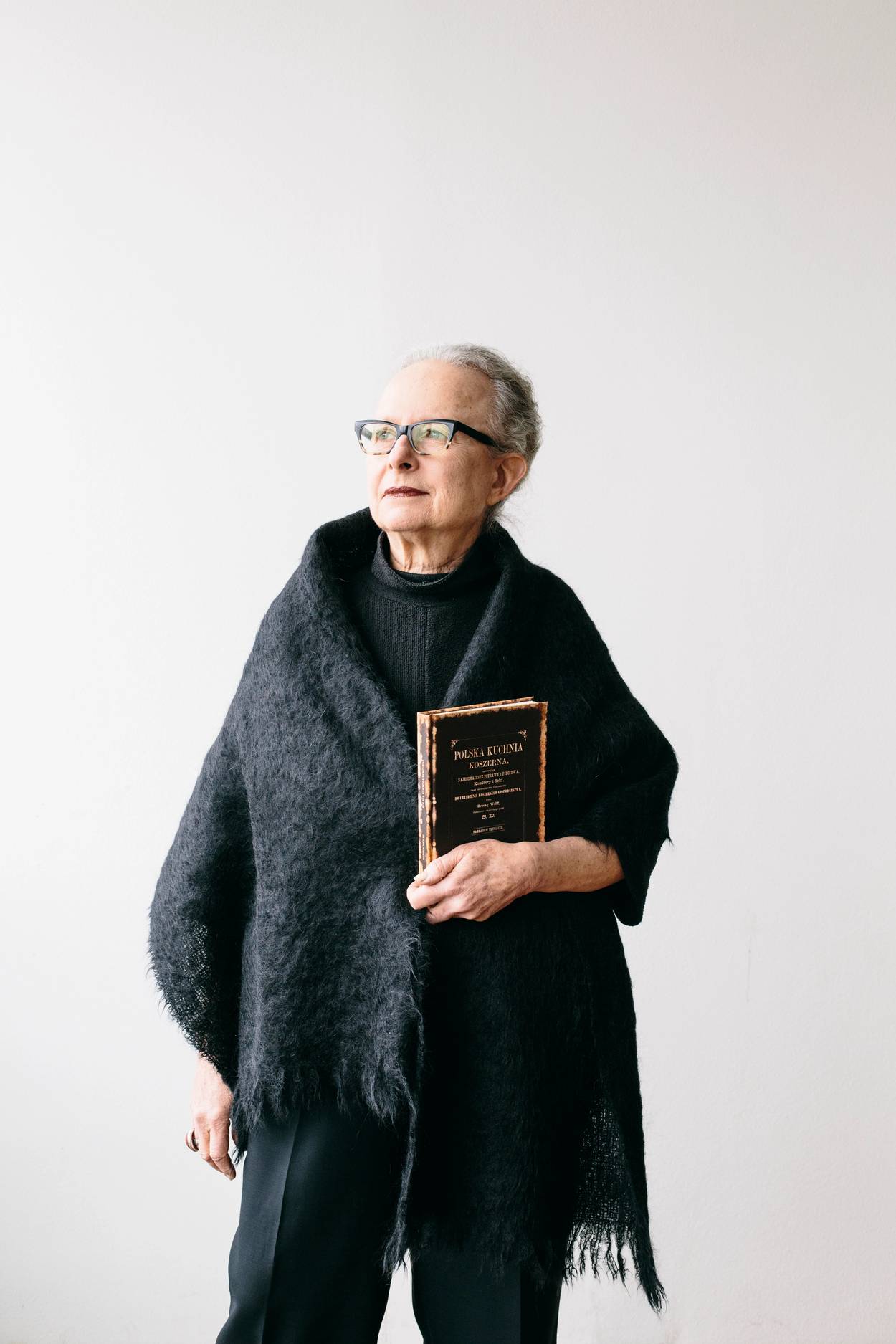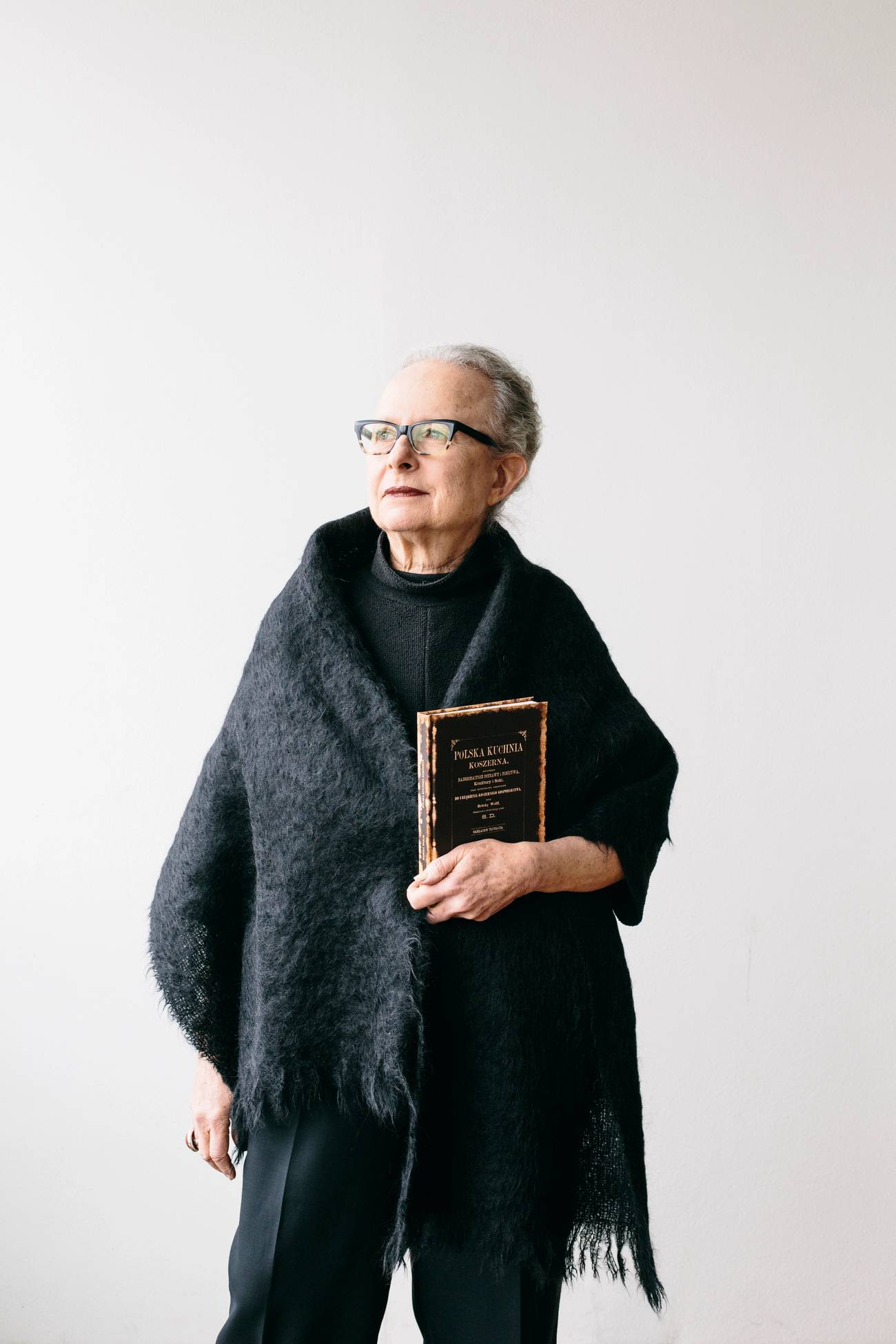Behind the Recipes
Why Yiddish culture scholar Barbara Kirshenblatt-Gimblett’s impressive book collection includes more than a thousand Jewish cookbooks




inFor nearly five decades, Barbara Kirshenblatt-Gimblett has lived in a house made of books. She and her husband, the artist Max Gimblett, moved into a loft on the Bowery in downtown Manhattan in 1974. Half of the space was dedicated to his studio; the other half to her study, which housed her incomprehensibly large (and ever-growing) book collection. Today, that collection contains nearly 14,000 spines in total. A staggering 1,200 of those are Jewish cookbooks—out-of-print and contemporary, Ashkenazi, Sephardi, and Middle Eastern, printed in Yiddish, German, Hebrew, and English, among many other languages, professionally published and spiral bound.
Kirshenblatt-Gimblett, who will be giving a lecture about her collection on Feb. 28 with the University of Texas, Austin, has had good reason to amass a large personal library. Now retired at age 78, she is university professor emerita and professor emerita of performance studies at New York University. She was a trailblazer in the fields of Yiddish culture and folklore, and was among a pioneering group of scholars who first took food studies seriously as an academic discipline. More recently, she played a central role in founding the POLIN Museum, a Warsaw-based museum focused on the history of the Jews of Poland (where her own family originated). She remains the chief curator of the museum’s core exhibition.
Over the years, with each lecture and project Kirshenblatt-Gimblett took on, the metal shelves lining her study’s walls and the wooden book trolleys snaking through the space like a corn maze would get rearranged or newly erected to make room for incoming materials. “I would usually assemble a whole library just for one course,” she said. Still, Kirshenblatt-Gimblett’s book collection far exceeds her academic needs. She is, at heart, a true collector who seeks out books as readily as she breathes. “I collect absolutely everything, I’m indiscriminate,” she said of her Jewish cookbook collection. “The issue isn’t whether they are good or bad, it’s that they exist.”
Among her most prized tomes are multiple editions of Aunt Babette’s Cook Book and The Settlement Cookbook, both hugely influential American Jewish food titles from the late 19th and early 20th centuries. She also has many editions of The Jewish Home Beautiful, published in 1941, and containing a bewildering recipe for Hanukkah “candle salads,” which instructed Jewish housewives to insert half of a peeled banana into the hole of a canned pineapple ring, top it with a cherry (to represent a candle flame), and “serve with whipped cream, or marshmallow fruit salad dressing.”
Two other favorites make quite an unusual pair. The first, Gastronomie Juive, was published in Paris in 1929 by Suzanne Roukhomovsky, and heralds Ashkenazi home cooking from Russia, Alsace, and Romania. The second, Di yidishe kukh in ale lender, is a pirated Yiddish translation of the same book published by B. Safran. It shamelessly copies the original’s recipes, while adding a judgy chastisement of Polonized Jewish housewives whom Safran believed had grown lax with their household responsibilities. “It’s a goldmine in terms of thinking about Jewish food, cookbooks, and the relationship of these authors,” Kirshenblatt-Gimblett said.
Ultimately, far more than seeking out a new gefilte fish recipe to try, it is relationships and connections that Kirshenblatt-Gimblett seeks when adding a new Jewish cookbook to her shelves. She looks for patterns—how dishes disappear or evolve over time, the family stories in the headnotes, who is writing the books and for what intended audience. “I’m intrigued by the range and variety of them, and what that represents,” she said. “I’m interested in them as Jewish material culture—the culture of the table, the home, and of women.” She also collects because that’s simply what collectors do.
Kirshenblatt-Gimblett grew up in the 1940s and ’50s in downtown Toronto, which at the time was primarily populated by Holocaust survivors and other Jewish immigrants. Her family shared a spacious corner building with her father’s three brothers and their families. She remembers the milkman’s and greengrocer’s wagons clattering down the cobblestone street outside, and a cherry tree that filled their third-floor window with pink blossoms each spring.
She remembers Shabbat meals (“My mother was a good cook, but not a passionate cook,” she said) filled with chicken soup with eyerlekh (unborn chicken eggs), p’tcha, brisket, and mandelbrot, and leisurely Sunday brunches with friends eating smoked carp, sprats, lox, and bagels with cream cheese. When her mother played mah-jongg or bridge with friends, Kirshenblatt-Gimblett was usually in charge of lunch—half a cantaloupe with a scoop of sorbet, or something similarly en vogue at the time.“My mother was very encouraging of my interest in cooking,” she said. “Nothing pleased her more than when I would make lunch for her friends.”
Beyond her budding interest in cooking, Kirshenblatt-Gimblett’s predilection for collecting emerged during her childhood as well. While most people today take pains to reduce the amount of junk mail in their lives, she actively sought out correspondence. She cultivated a community of pen pals from all over the world. When they didn’t deliver a steady enough stream of letters, she began writing tourism departments to request travel brochures and health insurance companies for literature about various illnesses. “I got a mountain of mail this way,” she said.
She also solicited small cookbooks, offered for free from food product companies like Campbell’s and Gold Medal Flour. “I wasn’t thinking about the cookbooks as a collection just yet, although I did want to cook from them,” she said. “It was more about getting mail.” She eagerly awaited the postman’s arrival to see what treasures the day would bring.
Kirshenblatt-Gimblett’s methods for collecting books today mirror her childhood passions. For years she actively purchased books on eBay. But in the pre-internet days, she scoured catalogs from antiquarian book dealers for interesting titles, and reached out directly to synagogues to inquire about any fundraising or community cookbooks they had published. She also went directly to book printers and, when a New York City publishing company or bookstore went out of business or moved, she would spend days combing through their basement archives and even the dumpsters outside. “I would come out looking like I had been in a coal mine,” she said.
She also cultivated a decadeslong friendship with Dalia Carmel, a like-minded cookbook collector and traveler with an equally staggering book collection. The two were first connected via the owner of a used bookstore in Ann Arbor, Michigan, in the late 1980s. Carmel invited Kirshenblatt-Gimblett over for dinner and the two hit it off immediately. As their relationship grew, they became book sleuthing partners, sending each other books and tips about must-have titles. “Whenever I found a particularly special book, I would order one for me and one for Barbara,” Carmel said.
Kirshenblatt-Gimblett may not regularly turn to her Jewish cookbooks for recipes. But in another lifetime, before COVID-19 stole the ability to socialize indoors, she regularly threw dinner parties. In 2018, after 44 years on the Bowery, she and Gimblett moved to a new downtown loft with a spacious, well-appointed kitchen. “It is humongous,” Carmel said. “You could drool.”
Even in their previous kitchen, which was decidedly more bohemian (and, as an extension of her study, packed with cookbooks), Kirshenblatt-Gimblett delighted guests with her eclectic menus. She shopped for beets in Chinatown (“where they are reliably sweet and full-flavored,” she said) and tossed them with shiso, pomegranate molasses, and wasabi sesame seeds. She served beluga lentils with sauteed leeks, lemon, and parsley. Once, she built a dinner around every variety of potato she could find at the Union Square Greenmarket. At another, she made a meal of clear broths and pureed vegetables for a friend who was on a very restricted diet while battling pancreatic cancer.
Entertaining remains on hold for the foreseeable future, but Kirshenblatt-Gimblett continues to find inspiration and comfort at the stove. Her kitchen, like her bookshelves, is full to bursting, but ordered in a way that feels intuitive. “Everything with Barbara is so precise and makes so much sense,” Carmel said. “Her brain is transparent. When she speaks, you can see the tiny, intricate gears turning around.”
When Kirshenblatt-Gimblett retired from NYU, her community—fellow professors, academics, and Yiddishists, students, collaborators, and friends—created a cookbook in her honor. Called Intangible Gifts, and edited by former student Yael Raviv (founder of the food and design studio Umami), the recipes and stories reflect the profound impact BKG, as she is fondly called, has made on those around her. “She is so prolific and engaged in so many different projects,” Raviv said. From professor Hasia Diner’s Shabbat chicken and Nach Waxman’s chopped liver to a fictitious chocolate chip cake dreamed up by professor Jonathan Deutsch, that deep engagement with the world around her can be found on every page.
Delighted with the gift, Kirshenblatt-Gimblett did with it what she does with all of her cookbooks: made space on the shelf. “There’s something ineffable about my collection,” she said. “I get enormous pleasure dipping into it and discovering things. I love my books. I just love them.”